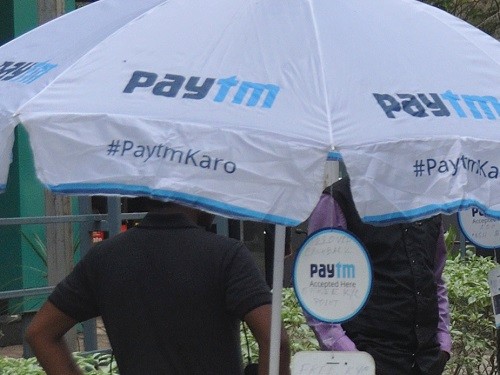- SWOT Analysis ›
- IT & Technology ›
- Paytm SWOT Analysis
Paytm SWOT Analysis
Here is a detailed SWOT analysis of Paytm covering strengths, weaknesses, opportunities and threats.
SWOT analysis is a management strategy framework used by businesses like Paytm for assessing organization’s Strengths, Weaknesses, Opportunities, and Threats to guide strategic decision-making. Paytm is an Indian mobile app and online service which is used to make payments using ewallet and e-money. Paytm was formed in 2010 and its parent company is One97. By examining these internal and external factors, Paytm can capitalize on advantages, mitigate risks, and chart a more competitive path forward. Paytm has received several rounds of funding from well known investors like Alibaba Group, Ratan Tata, Mountain Capital etc. Let us start the SWOT Analysis of Paytm below.
Paytm Strengths
- Paytm has got extremely high brand awareness across India
- Paytm was able to scale up its business quickly after demonetization
- Offers multiple cashback options to customers
- Paytm is largely accepted by merchants across India, which has helped the brand grow
- Strong marketing campaigns have helped spread brand awareness
- Word of mouth of cashless transactions and ease of use has been accepted well by the people
- Strong investments from Ratan Tata, Alibaba group etc have strengthened Paytm's position
Above are the strengths in the SWOT Analysis of Paytm. The strengths of Paytm looks at the key internal factors of its business which gives it competitive advantage in the market and strengthens its position.

Paytm Weaknesses
- Audience in India is less the savvy as majority consider cash as primary currency
- Paytm has diversified too much
These were the weaknesses in the Paytm SWOT Analysis. The weaknesses of a brand are certain aspects of its business which it can improve.
Paytm Opportunities
- Paytm can cater to a larger audience with some offline presence as well
- Paytm can educated customers on accepting cashless transactions and online payments which would in turn boost their customer base
- Offer more banking services along with online payment options
Above we covered the opportunities in Paytm SWOT Analysis. The opportunities for any brand can include prospects of future growth.
Read more about Paytm
Paytm Threats
- Banks offering ewallets on their saving accounts
- Security and privacy of user is a concern for Paytm
The threats in the SWOT Analysis of Paytm are as mentioned above. The threats for any business can be external factors which can negatively impact its business.
Hence this concludes the Paytm SWOT analysis.
Read Similar SWOT analysis
About Paytm
The table below gives the brand overview along with its target market, segmentation, positioning & USP
| Paytm Overview | |
|---|---|
| Parent Company |
One97 Communications |
| Category |
Ecommerce – Online payments |
| Sector | |
| Tagline/ Slogan |
Paytm karo |
| USP |
Online payment systems with high customer base and acceptance |
| Paytm STP | |
| Segmentation |
People with smartphones looking for cashless payment transactions |
| Target Market |
Urban tier1 tier2 cities- young and middle aged people |
| Positioning |
Paytm can be used as an alternate for cash to make payments for daily basic needs |
This article has been researched & authored by the Content & Research Team which comprises of MBA students, management professionals, and industry experts. It has been reviewed & published by the MBA Skool Team. The content on MBA Skool has been created for educational & academic purpose only.
Browse marketing analysis of more brands and companies similar to Paytm. This section covers SWOT Analysis along with Segmentation, Target Market, Positioning & USP of more than 2000 brands from over 20 industry sectors.
Continue Reading:
The brand names and other brand information used in the SWOT Analysis section are properties of their respective companies. The companies are not associated with MBA Skool in any way.
Edit the brand or add a new one to SWOT Analysis section : Contribute
What is MBA Skool?About Us
MBA Skool is a Knowledge Resource for Management Students, Aspirants & Professionals.
Business Courses
Quizzes & Skills
Quizzes test your expertise in business and Skill tests evaluate your management traits
Related Content
All Business Sections
Write for Us